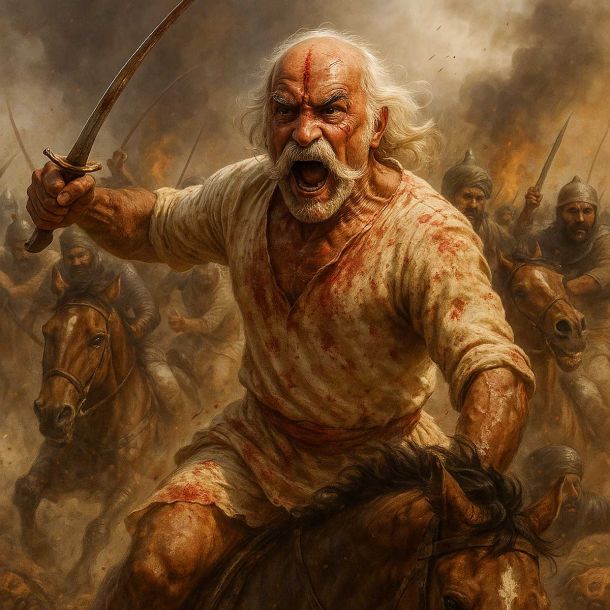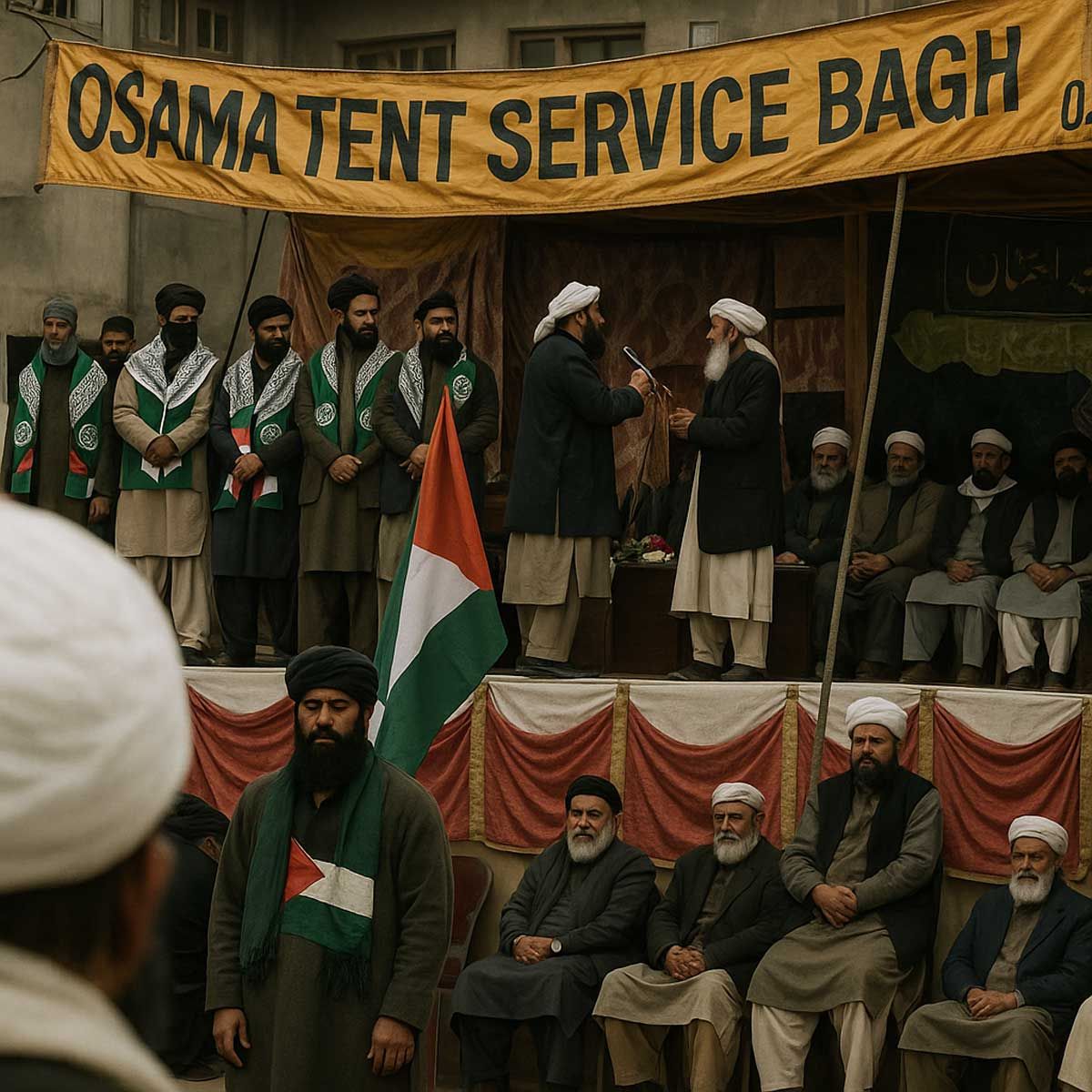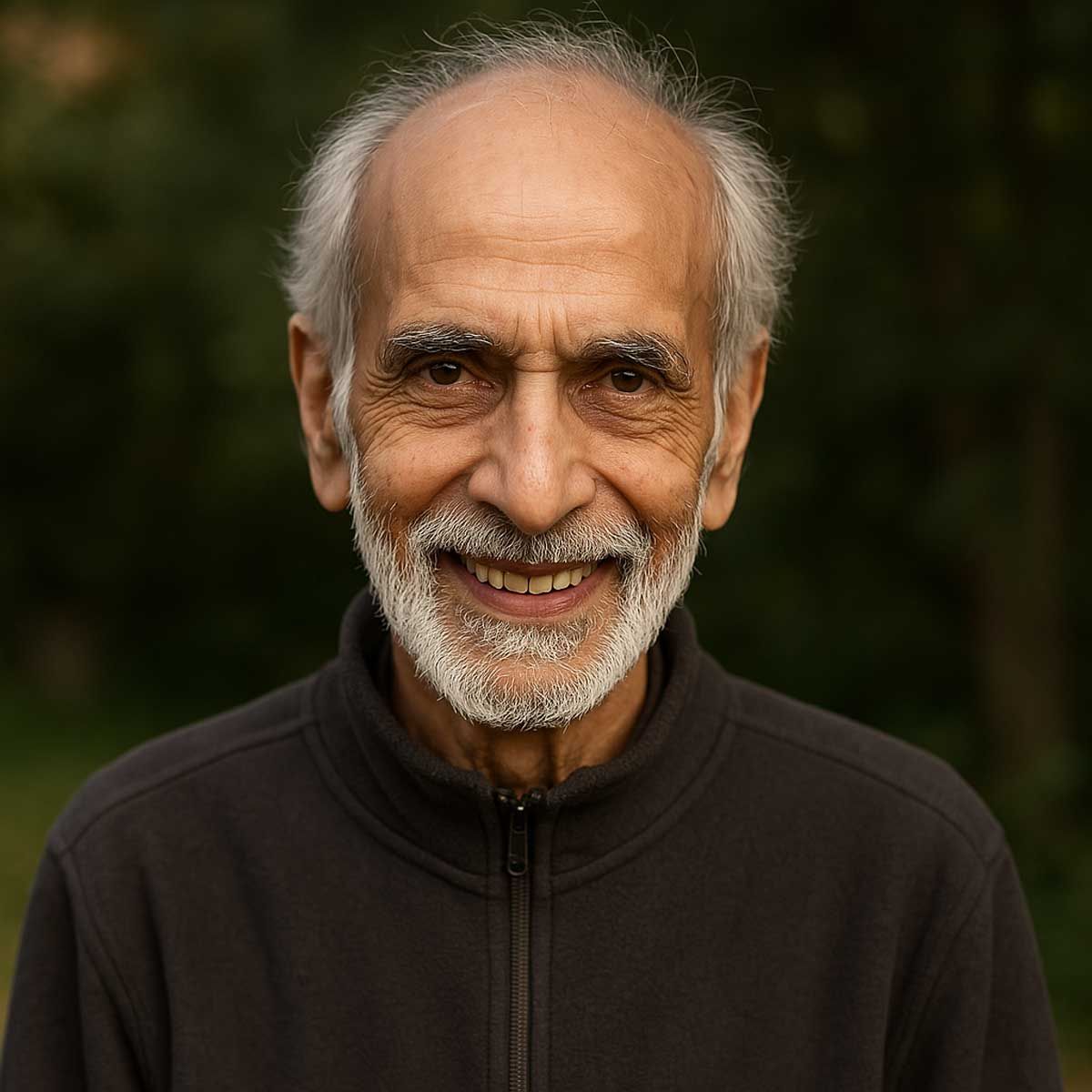Sanatan Articles
Satyaagrah
Written on
Satyaagrah
Written on
Satyaagrah
Written on
Satyaagrah
Written on
Satyaagrah
Written on
JOIN SATYAAGRAH SOCIAL MEDIA
Netaji, an Impossible man can never be boxed into an ideological corner: Not just the most enigmatic figure in world history but his life is also a tough lesson in how to think about history
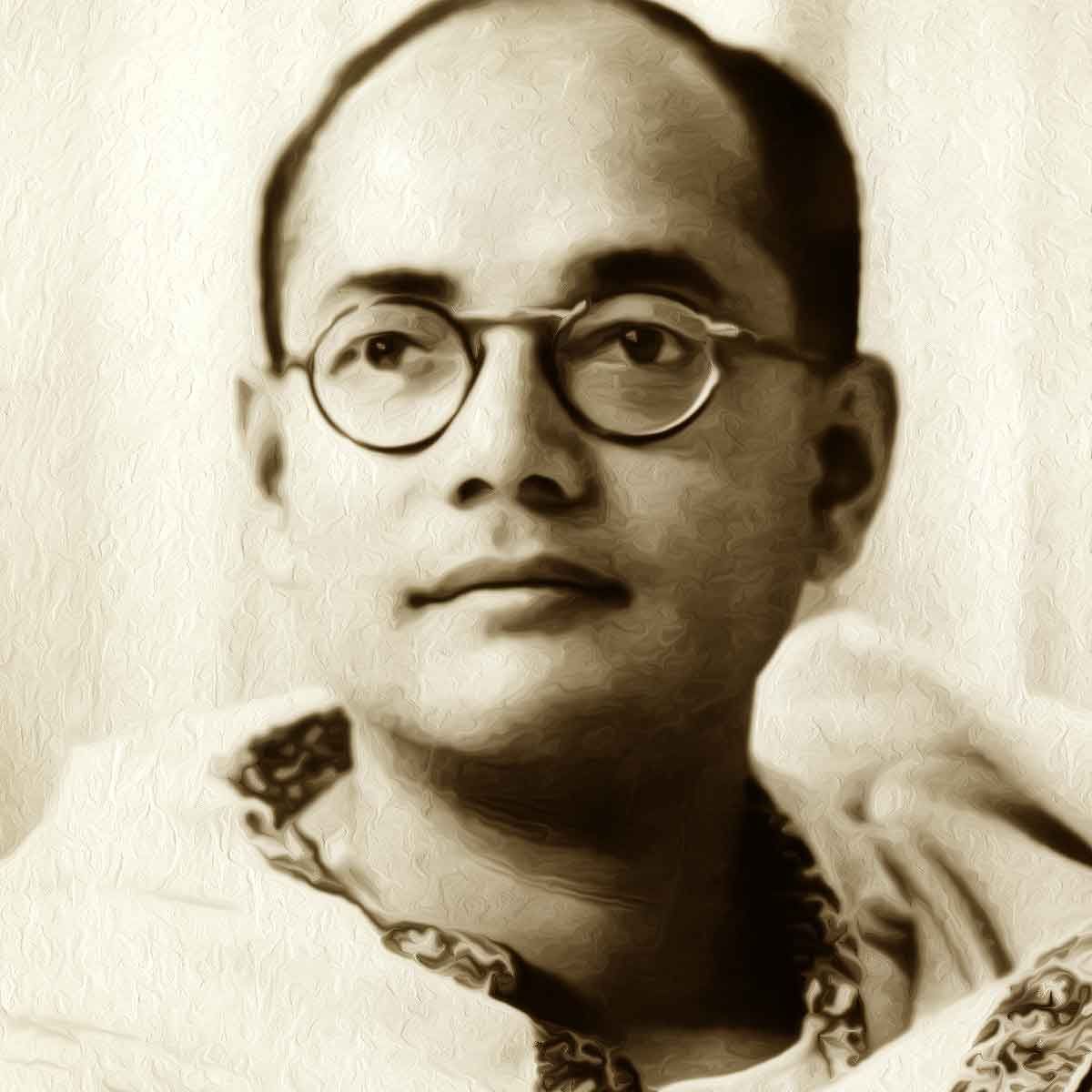
Let us start with an anecdote. In 2019, a video went viral, which showed a man wearing a T-shirt with the face of Netaji Subhas Chandra Bose. The person in question was one Saikat Chakrabarti, then chief of staff for democratic socialist Congresswoman Alexandria Ocasio-Cortez.
The video caused an uproar in the US and it is not hard to see why. Put yourself in the shoes of an American whose grandfather fought the Nazis on the beaches of Normandy. How would you feel if somebody were to glorify a man who had been a Nazi ally? And a leader who had declared war on your country, as Bose certainly did.
But then, Saikat Chakrabarti is also an American, evidently of Indian heritage. And Netaji was fighting for the freedom of all Indians of his time. So, whose grandfather is more important? Whose freedom matters more?
And that is how Netaji forces you to admit the complexities of history. More often than not, people come to study history looking for ways to confirm their politics. But facts are not beholden to anyone. In other words, if you try to study Netaji’s life through an ideological prism, no matter which one, he will make you uncomfortable.
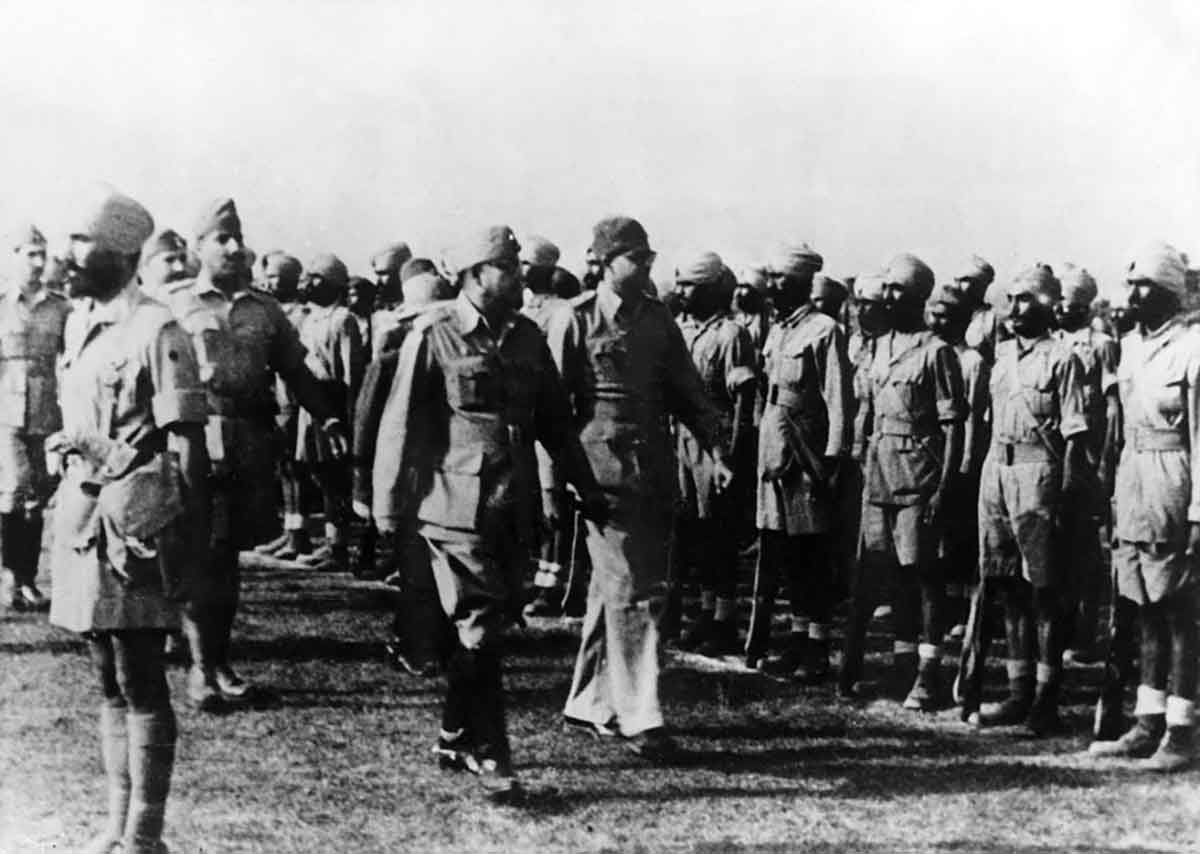 Indian nationalist leader Subhash Chandra Bose reviewing soldiers of the Indian National Army in 1944 |
Let us go through this one by one. Start with the Congress worldview. Your big heroes are Gandhi and Nehru. We know Netaji was elected to the position of Congress president in 1939, defeating Gandhiji’s candidate. But they forced Netaji to resign. What do you do about the fact that Gandhi and Nehru had been trying to turn the Congress into a family monopoly for over a decade at that point?
In fact, in 1928, Motilal Nehru wrote to a letter to Gandhi that even though Sardar Patel was more qualified, “the party should now be handed over to young leaders of Jawahar’s type.” The Mahatma replied that the time was not yet ripe for Jawahar to “occupy the throne” and suggested that Motilal himself “wear the crown” for a while. Accordingly, Motilal Nehru became party president in 1928 and his son Jawahar ascended to the position in 1929. If you are a Congress supporter, how do you defend this cosy club and the way Netaji was treated?
If you are a BJP supporter, you may be thrilled at this last paragraph. But things don’t look very good for you either. Netaji was not Hindu right and no free market advocate; he was an outspoken leftist. Perhaps even a radical leftist. So while you may enjoy embarrassing the Congress over how they treated Netaji, you are not doing so well yourself.
Perhaps the leftists could be happy then? Not a chance! Because Netaji’s life story will take you into the most embarrassing chapter of left-wing history. Did Netaji set out from Calcutta to go to Nazi Germany? Of course not! He went to Peshawar, crossed over into Afghanistan and from there into the Soviet Union. Netaji had set out to reach the Communist USSR, the promised land of the revolution. But as it turns out, the Communists at the time were military allies with the Nazis. So when Bose reached Russia, the Communists turned him over to their Nazi friends in Germany.
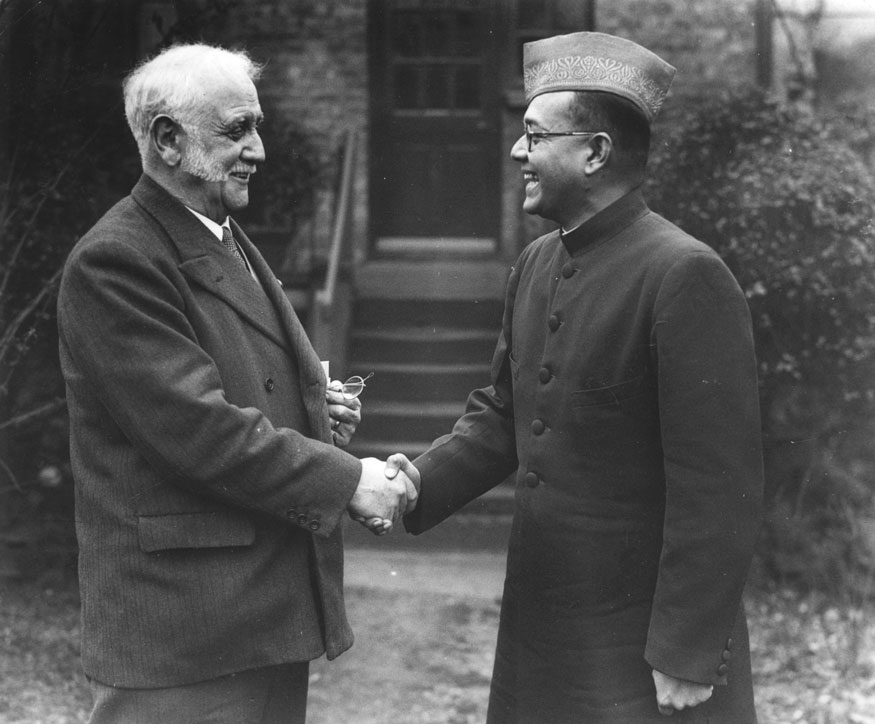 Labour politician and editor of the Daily Herald, George Lansbury greeting Subhas Chandra Bose Indian Nationalist leader and supporter of the Axis in WW II |
As a matter of fact, World War 2 began when Hitler and Stalin jointly invaded Poland in Sep 1939, which they proceeded to divide among themselves. As per the friendship treaty between Hitler and Stalin, the Nazis would get half of Poland, while the Communists would have the remainder, as well as the Baltic states (Latvia, Lithuania, Estonia), along with Finland. In other words, all the big Communist boast about resisting Hitler is just a matter of a very loving relationship going sour in 1941. Have you noticed how history textbooks gloss over the story of this wonderful friendship between Communists and Nazis? From that, you can guess the political inclinations of those who wrote those textbooks.
Not just within the Indian political context, Netaji will make almost anyone uncomfortable. The European powers like Britain and France said they were fighting on behalf of free people. But what sort of freedom is it when they had huge colonial empires of their own? But Netaji was no anti-imperialist either. He first sought help from the Soviet empire and then from the Nazi empire. Those are two of the most brutal regimes in history. And finally, he raised an army with the help of Japanese imperialists. The story of Japanese imperialism in East Asia and South East Asia is also one of unimaginable cruelty.
No matter how much you try, Netaji can never be boxed into an ideological corner. You have to settle for the fact that the truth is what it is, with all its complexities and ironies. Netaji is not just the most enigmatic figure in world history; his life is a tough lesson in how to think about history. He is a lesson to the historians themselves.
So what is the legacy of Netaji Subhas Chandra Bose? What relevance does he have for common people like you and me, living our ordinary lives in 21st century India? It might be too much for me to try and sum up his legacy, but I will try.
First, it is about unqualified patriotism. He always put the nation first. Don’t let anyone bully you for professing love for our country.
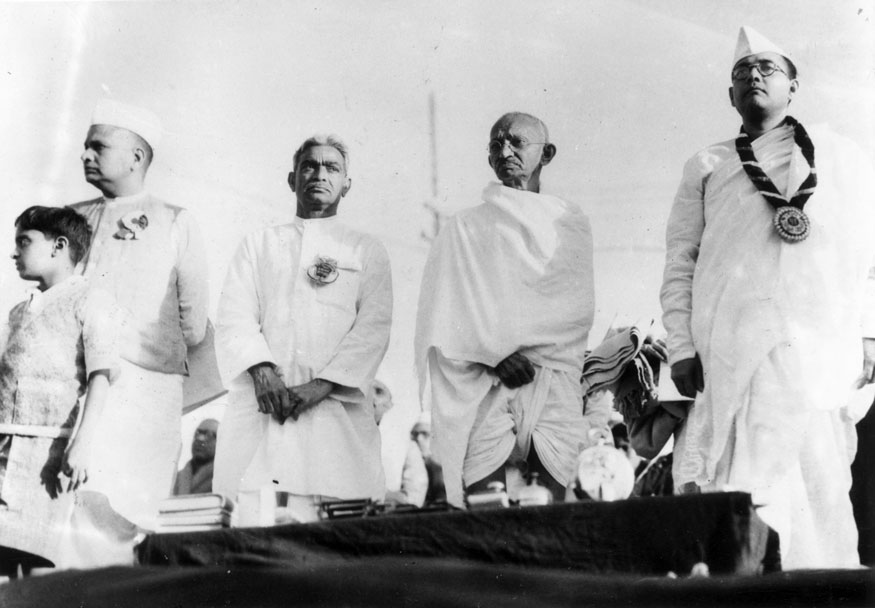 Members of the Indian National Congress on the dais at Haripura. From left to right, Seth Jamnalal Bajaj, Darbar Gopoldas Dasai, Mahatma Gandhi (Mohandas Karamchand Gandhi) and Subhas Chandra Bose |
Second, it is about daring and sense of purpose. Netaji tried everything. He engaged with the British to advocate for Indian independence. He tried it the way of Gandhi and Nehru and their Indian National Congress. When that didn’t work, he travelled from Calcutta to Peshawar to Kabul and then escaped to the Soviet Union to make the best of the opportunity presented by World War 2. And from there to Germany. From there onwards, he travelled under the high seas in a German U-boat, transferring somewhere near the southern tip of Africa into a Japanese submarine. From Japan to Singapore and then Burma, where he organized a liberation army that he led to the borders of British India. For what? Independence.
Yes, this man was for real.
Third, it is about holding our head high as we engage with the world. A lot of great Indian leaders suffered from a sense of inferiority towards the colonial power. And who could blame them for it? Looking at a map of India, dominated by a tiny island nation from afar, it is easy to look down on ourselves. But Netaji never saw it that way. He saw it for what it really was, a mere accident of history. He engaged with the British, the Soviets, the Germans and the Japanese on his own terms. If he could do it in the 1930s and 1940s, how could any of us be lacking in self-confidence today? No excuse.
It is perhaps fitting that Netaji’s death remains a mystery. For no definitive death could have done justice to the life that he lived. That of the impossible man. Jai Hind!
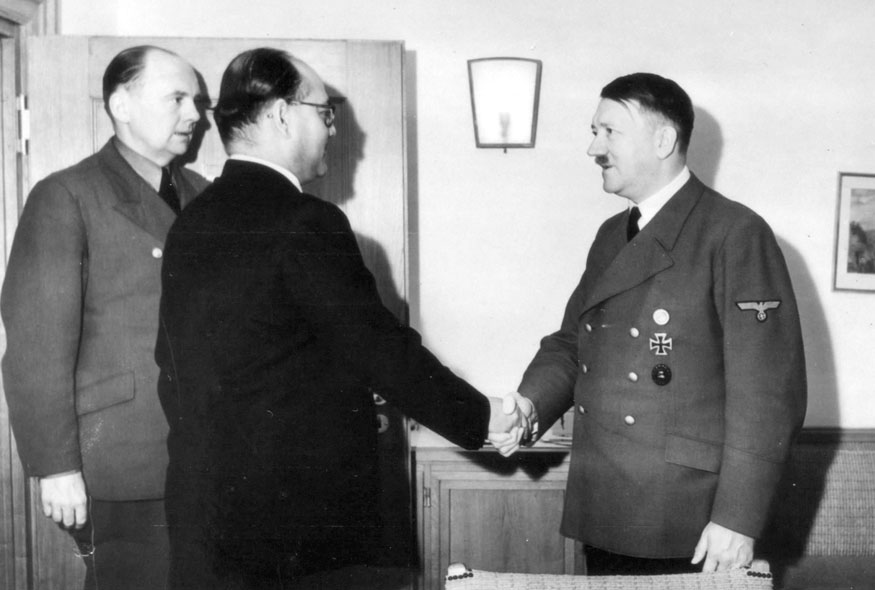 Indian nationalist leader Subhash Chandra Bose and Adolf Hitler in Berlin, Germany |
References:
opindia.com - Abhishek Banerjee
 Support Us
Support Us
Satyagraha was born from the heart of our land, with an undying aim to unveil the true essence of Bharat. It seeks to illuminate the hidden tales of our valiant freedom fighters and the rich chronicles that haven't yet sung their complete melody in the mainstream.
While platforms like NDTV and 'The Wire' effortlessly garner funds under the banner of safeguarding democracy, we at Satyagraha walk a different path. Our strength and resonance come from you. In this journey to weave a stronger Bharat, every little contribution amplifies our voice. Let's come together, contribute as you can, and champion the true spirit of our nation.
 |  |  |
| ICICI Bank of Satyaagrah | Razorpay Bank of Satyaagrah | PayPal Bank of Satyaagrah - For International Payments |
If all above doesn't work, then try the LINK below:
Please share the article on other platforms
DISCLAIMER: The author is solely responsible for the views expressed in this article. The author carries the responsibility for citing and/or licensing of images utilized within the text. The website also frequently uses non-commercial images for representational purposes only in line with the article. We are not responsible for the authenticity of such images. If some images have a copyright issue, we request the person/entity to contact us at This email address is being protected from spambots. You need JavaScript enabled to view it. and we will take the necessary actions to resolve the issue.
Related Articles
- If only India’s partition chilling wound was not enough, Gandhi did his last protest again only to blackmail India into giving 55 crores to Pakistan, dragged Hindu, Sikh refugees seeking shelter in mosques to die in cold: And we call him Mahatma, not for
- Father of the Nation! Absolutely not. Mohandas Karamchand Gandhi was not the father of the nation either officially or otherwise
- The untold story of Maharashtrian Brahmin genocide committed by Congress after Gandhi’s assassination in 1948
- Harmonizing Nathuram Godse: Why India should move beyond denouncing him, a man who altered the course of not only the politics of the country but the very history of the Hindu Civilisation and, by extension, the world at large
- Anuj Dhar claims that Subhas Chandra Bose was suspected of being ‘poisoned’ after ouster from the post of Congress president
- Ghost from the past: Unseen picture of Nehru voting in favour of partition of India goes viral
- 'Muh me ram bagal me chhuri' - Gandhi’s politics is hollow and noisy, full of treachery and deceit’: Read what Dr. Ambedkar said about the ‘Mahatma’
- British PM accepted that “the tide of nationalism is running very fast in India" and the mutiny of the Royal Indian Navy in 1946 forced colonial masters Britain to leave India: What followed was betrayal by Congress
- Mysterious death of Pandit Deen Dayal Upadhyaya, whose growing popularity was a threat to Congress
- When Secular Nehru Opposed Restoration Of Somnath Temple - The Somnath Temple treachery
- The perpetrator of the Jallianwala Bagh massacre General Reginald Dyer was forgiven by Mohandas Gandhi as an exercise of forgiveness or love to nurse Dyer back to life if he was suffering from a physical malady
- British author Tunku Varadarajan tried to tarnish the image of iconic freedom fighter Netaji with reference to Hitler: Sinister agenda to malign the legacy of Netaji from calling him a ‘flawed hero’ to a ‘Nazi sympathiser’
- During ‘Kheti Bachao Yatra’ in Kurukshetra Shehjada Gandhi claimed of throwing China out from Indian Territory ‘in 15 minutes’: From Nehru’s Himalayan blunder to UPA’s silence as China took over Indian land in Ladakh
- Nehru's Himalayan Blunders which costed India dearly - Pre-Independence
- Bhagat Irwin Gandhi - Martyrdom of Shaheed Bhagat Singh (Some Hidden Facts)

